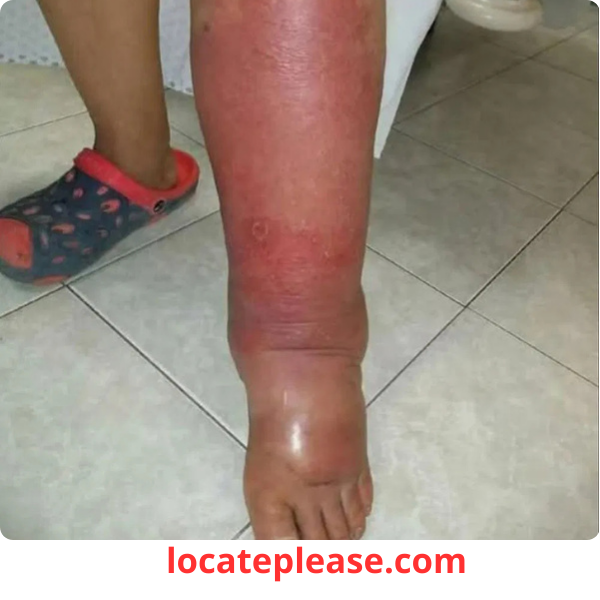We often treat our feet like afterthoughts — shoving them into shoes, walking miles without rest, and only paying attention when they ache.
But what if your feet are trying to tell you something?
While eyes may be the windows to the soul, your feet could be the windows to your overall health.
From swelling and discoloration to numbness and strange sensations, the condition of your feet can reveal hidden medical issues long before other symptoms appear.
So take off your shoes.
Sit down.
And take a closer look.
Your feet might just be sending you an urgent message.
🦶 Why Your Feet Are Health Messengers
Your feet are far more than just your foundation — they’re connected to your heart, kidneys, nerves, and circulatory system.
Because they’re the farthest from your heart, they often show signs of systemic problems first.
Ignoring foot symptoms can mean missing early warnings of serious conditions — from heart disease to diabetes.
Let’s explore the most common signs on your feet — and what they could mean.
🔴 1. Swelling (Edema) – It’s More Than Just “Puffy Feet”
Swelling in the feet and ankles — known as edema — is one of the most telling signs that something deeper may be going on.
🚩 Possible Causes:
- Heart issues – In heart failure, weakened pumping action causes fluid to back up in the legs and feet.
- Kidney problems – When kidneys can’t filter fluids and sodium, fluid builds up in tissues.
- Liver disease – Low albumin (a protein made by the liver) leads to fluid leakage into the lower limbs.
- Lymphatic system disorders – Damaged or blocked lymph nodes cause lymphedema, a chronic swelling condition.
- Venous insufficiency – Veins struggle to return blood to the heart, causing fluid to pool in the legs.
- Medications – Blood pressure drugs, steroids, antidepressants, and NSAIDs can cause fluid retention.
- Pregnancy – Mild swelling is common, but sudden or severe swelling can signal preeclampsia, a dangerous condition.
✅ Red flag: Swelling in one foot only? Could be a blood clot (DVT) — seek medical help immediately.
🟡 2. Yellow or Thickened Toenails – Not Just a Fungal Infection
Thick, yellow toenails are often dismissed as a fungal issue — and while that’s common, it could also signal:
- Psoriasis – Skin condition that affects nails
- Diabetes – Poor circulation and nerve damage increase fungal risk
- Lung disease – Rarely, yellow nail syndrome is linked to respiratory issues
If over-the-counter antifungals don’t work, see a doctor — it might not be just a nail problem.
🔵 3. Cold Feet – Even in Warm Rooms
If your feet are constantly cold, it may be more than poor circulation.
🚩 Possible Causes:
- Poor blood flow – Due to peripheral artery disease (PAD)
- Hypothyroidism – Slows metabolism and reduces body heat
- Anemia – Low red blood cells mean less oxygen delivery
- Raynaud’s phenomenon – Blood vessels spasm in response to cold or stress, turning toes white or blue
👉 Tip: Pair cold feet with fatigue or dry skin? Get your thyroid checked.
⚪ 4. Dry, Cracked Skin – Especially Around the Heels
Dry skin is common, but deep cracks (fissures) can be a sign of:
- Low humidity or dehydration
- Eczema or psoriasis
- Hypothyroidism
- Vitamin deficiencies (like B12 or vitamin E)
- Diabetes – Nerve damage and poor circulation dry out skin and slow healing
Cracked heels that won’t heal? Don’t just slather on lotion — check your health.
🔤 5. Numbness, Tingling, or Burning – A Nerve Warning
“Pins and needles” in your feet isn’t normal — it’s a sign of nerve damage.
🚩 Most Common Cause:
- Diabetic neuropathy – High blood sugar damages nerves over time
Other causes:
- Vitamin B12 deficiency
- Sciatica or spinal issues
- Alcohol abuse
- Autoimmune disorders (like multiple sclerosis)
✅ Early sign: Numbness that starts at night or while resting.
🔴 6. Red, Hot, Swollen Foot – Could Be an Infection
If one foot is suddenly red, hot, swollen, and painful, it could be:
- Cellulitis – A bacterial skin infection requiring antibiotics
- Gout – Uric acid crystals causing intense joint pain (often in the big toe)
- Deep vein thrombosis (DVT) – A blood clot that’s life-threatening if it travels to the lungs
👉 Never ignore sudden, one-sided swelling or pain.
🖌️ 7. Discoloration – What Color Says About Your Health
|
Blue or purple toes
|
Poor circulation, Raynaud’s, or low oxygen
|
|
Pale feet
|
Anemia or poor blood flow
|
|
Dark spots under nails
|
Could be bruising… or melanoma (see a doctor!)
|
|
Yellow skin
|
Liver issues (jaundice) or fungal infection
|
🧠 8. Changes in Foot Shape or Arch Collapse
- Flat feet in adulthood? Could be posterior tibial tendon dysfunction — but also linked to obesity, diabetes, or high blood pressure
- Bunions or hammertoes? Often from shoes — but can worsen with arthritis or nerve damage
✅ How to Listen to Your Feet
Your feet don’t lie.
Here’s how to stay ahead of potential health issues:
- Inspect your feet weekly – Look for swelling, color changes, cuts, or nail changes
- Check for temperature differences – One foot colder or hotter than the other?
- Note any numbness or pain – Especially at night
- Stay hydrated and moisturized – Dry skin can hide deeper issues
- Wear proper footwear – Support matters for both comfort and circulation
- See a doctor if you notice sudden or persistent changes — especially if you have diabetes or heart disease
❤️ Final Thoughts: Your Feet Are Talking — Are You Listening?
You don’t need a crystal ball to see into your health.
Sometimes, all you need to do is take off your shoes and look down.
Your feet are silent messengers, sending early warnings about your heart, kidneys, nerves, and hormones.
So next time you kick off your shoes, pause for a moment.
Check your toes.
Feel your skin.
Notice any changes.
Because sometimes, the first sign of a serious condition isn’t in a blood test —
👉 It’s right at your feet.
Listen to your body. It’s always speaking — even in silence.










